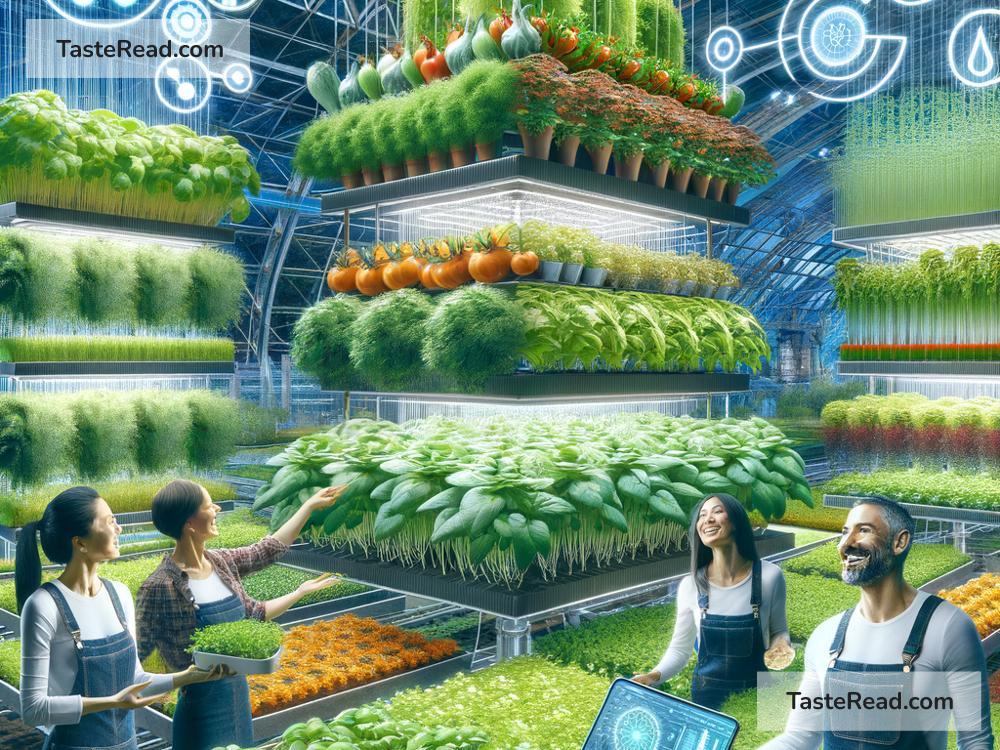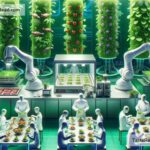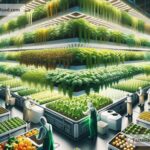The Future of Food: Building Regenerative Global Models
Food has always been an essential part of human life. But in recent years, one big question has come up: how will we grow and produce enough food for everyone in the future? As the world’s population grows and climate change continues to challenge traditional farming methods, experts believe that we need to rethink how we produce food. Instead of simply producing more, we need to focus on creating sustainable and regenerative systems that work with, rather than fight against, nature. Let’s explore the future of food and how regenerative global models could reshape how we feed the world.
The Problem: Why We Need Change
Our current systems of food production have brought many benefits, helping billions of people to avoid hunger. However, they also come with serious problems. Industrial agriculture relies heavily on synthetic fertilizers, pesticides, and factory farming. While this provides large quantities of food, it harms the environment in many ways. For example:
- Soil Degradation: Over-farming and chemical use have damaged soils worldwide. Healthy soil is crucial for growing food, but many farming practices erode soil, leaving it lifeless and unable to retain water or nutrients.
- Climate Change: Agriculture contributes to greenhouse gas emissions through deforestation, methane from livestock, and the use of fossil fuels in machinery and transport.
- Loss of Biodiversity: Large-scale monoculture farming (growing only one crop) destroys ecosystems and pushes plants, animals, and pollinators like bees to the brink of extinction.
If we continue down this path, we risk depleting the Earth’s resources and making it harder to grow food for future generations. Clearly, we need a smarter way to produce food—a way that repairs the planet instead of exploiting it.
What Is Regenerative Agriculture?
Regenerative agriculture is a farming approach that focuses on improving the health of the soil, ecosystems, and communities while producing food. Instead of taking from the Earth without giving back, regenerative models seek to restore balance and harmony. This system mimics nature’s processes, emphasizing practices that can rebuild the soil, clean the air, and protect water resources. Key principles of regenerative agriculture include:
- Soil Health: Farmers prioritize soil regeneration through methods like composting, crop rotation, and minimizing plowing (which reduces erosion). Healthy soil stores more carbon, grows better crops, and absorbs water, reducing the risk of flooding.
- Biodiversity: Instead of planting only one type of crop, regenerative farms grow a mix of plants, which benefits wildlife and ensures healthier ecosystems.
- Integrated Livestock: Animals, when managed well, can enrich the land. Their manure naturally fertilizes plants, and when they graze, they help maintain grasslands.
These methods aren’t just good for the planet—they also create long-term resilience for farmers and communities, making it easier for people to adapt to challenges like droughts, floods, and economic changes.
The Role of Technology in Transforming Food Systems
Technology will play a big role in shaping the future of our food. Innovations in agricultural science, data analytics, and renewable energy are helping farmers adopt more sustainable methods. Some exciting advancements include:
- Precision Farming: Using sensors, drones, and AI, farmers can monitor their crops more closely, applying water or fertilizers only where needed. This reduces waste and lowers environmental impact.
- Vertical Farming: Growing food indoors in stacked layers (often using LED lights and hydroponics) allows people to grow crops in urban areas, reducing the need for transportation and conserving space.
- Lab-Grown Meat: Scientists are working on creating meat without raising animals, which could drastically cut down on resource use, greenhouse gas emissions, and ethical concerns.
- Alternative Proteins: Foods like plant-based meat substitutes and protein-rich insects are gaining popularity as eco-friendly options.
Through a combination of old wisdom (regenerative practices) and new tools (advanced technologies), the future of food production could become both efficient and sustainable.
Beyond Farming: A Global Effort
Transforming the way we produce food isn’t just about changing farms—it requires a global shift in how we think about food systems. Governments, companies, communities, and individuals all play a role in creating a better future. Here are some key steps:
- Policy Support: Governments must encourage regenerative practices through subsidies, education, and research funding.
- Corporate Responsibility: Food companies can invest in sustainability, reduce waste, and source ingredients from ethical and regenerative farms.
- Community Involvement: Local food movements, urban farms, and cooperatives empower communities to grow their own sustainable food.
- Consumer Choices: By choosing to support farmers and brands that prioritize the environment, consumers can push for change.
Additionally, international collaboration is critical. Organizations and countries must work together to address global challenges like food insecurity, climate change, and deforestation.
The Future Is Regenerative
The future of food requires bold and innovative thinking, but it also depends on reconnecting with nature. Regenerative models remind us of the wisdom of working with the Earth rather than against it. By building systems that restore rather than deplete resources, we can ensure that future generations will have access to healthy, sustainable food.
Imagine a world where farms thrive, forests regrow, and communities are nourished by local, sustainable practices. That’s the promise of regenerative agriculture and food systems. The change won’t happen overnight, but with dedication, collaboration, and innovation, we can move toward a future where feeding the planet also means healing it.


